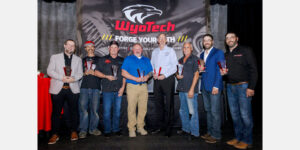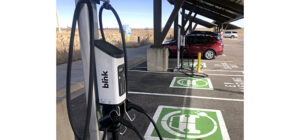More and more shops want to capitalize on the competitive advantages of being able to provide R-1234yf air conditioning service
Already this year, Chemours has seen a significant increase in supply of R-1234yf refrigerant going to the automotive aftermarket. This growth tells us that more and more shops want to capitalize on the competitive advantages of being able to provide R-1234yf air conditioning service.
Moreover, with many major manufacturers fully converted to R-1234yf systems, more than 95 million R-1234yf vehicles on U.S. roads, and 15 million vehicles coming out of warranty annually, the potential growth for aftermarket businesses is tremendous.
There’s no question, making sure your shop is ready to service R-1234yf vehicles is a smart move. But many shop owners who have made the decision to provide R-1234yf service are now asking, “What’s next?” Here are five steps to get you started on bringing in and retaining R-1234YF business.
1. Look at your business and decide how big a piece of the pie you want. Remember the goal in being R-1234yf ready is twofold: To keep your customers from going to the competition and, potentially, to provide a solution for customers whose “preferred shop” can’t service their vehicles. When assessing your business, remember all the potential sources that can take business away from you or send it your way, including shops like yours—of equal, smaller, or larger size—dealerships, and DIY-ers.
2. Estimate how much R-1234yf business you’ll be doing. For the purpose of forecasting and ordering, you can estimate that 30% to 40% of your current air-conditioning service business may come in as R-1234yf vehicles. You should also take a look at the types of vehicles you service, which may tell you that you need a greater supply of R-1234yf on hand. For example, vehicles with greater charge sizes, such as SUVs, EVs, and hybrids, typically require more refrigerant for servicing.
3. Choose the right R-1234yf packaging based on the amount of business you do. Remember, it’s OK to “walk before you run” as you transition, based on your business volume and your budget. Using our Opteon YF packaging options as an example, here are good guidelines to follow:
- 10- or 25-lb. cylinders—ideal for shops that perform a high volume of AC work; requires an appropriate R/R/R machine (customers tell us it pays for itself after servicing just six vehicles).
- 28-oz. and 12-oz. self-seal cans offer cost effective option for multiple use charges and single-use charges, respectively, and do not require an R/R/R machine. Make sure you are aware of your state’s small-can regulations.
4. Find a trusted source for all your R-1234yf needs. This source should do more than bring canisters or cans of the refrigerant to your door. Look for a supplier who has longevity in the industry, offers a ready and reliable supply, has a reputation for strong customer support, and provides training to ensure safe and proper use.
5. Get your crew and shop ready. Make sure your technicians have the proper training for R-1234yf, which is a mildly flammable A2L refrigerant. In addition, to prevent R-1234yf from being mixed with R-134A, the equipment has built-in safety guards, like opposite-side threading. So, you’ll also want to make sure your shop has the right equipment and tools.







Comments are closed.